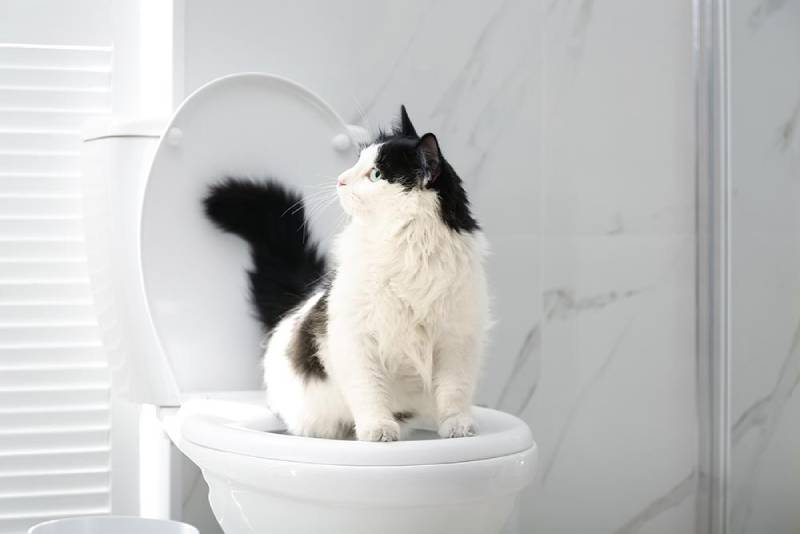Dangers of Flushing Cat Poop Down Your Toilet - Avoid Potential Issues
Dangers of Flushing Cat Poop Down Your Toilet - Avoid Potential Issues
Blog Article
The article listed below on the subject of How to Dispose of Cat Poop and Litter Without Plastic Bags is truly motivating. Don't bypass it.

Introduction
As feline owners, it's essential to be mindful of just how we get rid of our feline good friends' waste. While it may seem convenient to purge pet cat poop down the commode, this practice can have damaging effects for both the atmosphere and human health and wellness.
Alternatives to Flushing
Thankfully, there are more secure and more responsible methods to deal with cat poop. Think about the complying with choices:
1. Scoop and Dispose in Trash
One of the most usual technique of taking care of cat poop is to scoop it into a naturally degradable bag and toss it in the garbage. Be sure to use a dedicated litter scoop and get rid of the waste without delay.
2. Usage Biodegradable Litter
Go with biodegradable cat litter made from materials such as corn or wheat. These litters are environmentally friendly and can be safely gotten rid of in the garbage.
3. Bury in the Yard
If you have a lawn, think about burying feline waste in an assigned area away from vegetable yards and water resources. Make certain to dig deep adequate to stop contamination of groundwater.
4. Set Up a Pet Waste Disposal System
Invest in an animal garbage disposal system particularly developed for pet cat waste. These systems make use of enzymes to break down the waste, minimizing odor and environmental effect.
Health and wellness Risks
In addition to environmental worries, purging pet cat waste can also posture health and wellness risks to humans. Pet cat feces might consist of Toxoplasma gondii, a parasite that can create toxoplasmosis-- a possibly serious disease, specifically for expectant females and individuals with damaged body immune systems.
Environmental Impact
Flushing pet cat poop presents damaging microorganisms and parasites right into the water system, positioning a significant danger to aquatic ecological communities. These impurities can adversely influence aquatic life and compromise water top quality.
Final thought
Responsible family pet ownership extends past providing food and sanctuary-- it also entails proper waste monitoring. By refraining from purging cat poop down the bathroom and going with alternate disposal methods, we can reduce our environmental impact and secure human health.
Why Can’t I Flush Cat Poop?
It Spreads a Parasite
Cats are frequently infected with a parasite called toxoplasma gondii. The parasite causes an infection called toxoplasmosis. It is usually harmless to cats. The parasite only uses cat poop as a host for its eggs. Otherwise, the cat’s immune system usually keeps the infection at low enough levels to maintain its own health. But it does not stop the develop of eggs. These eggs are tiny and surprisingly tough. They may survive for a year before they begin to grow. But that’s the problem.
Our wastewater system is not designed to deal with toxoplasmosis eggs. Instead, most eggs will flush from your toilet into sewers and wastewater management plants. After the sewage is treated for many other harmful things in it, it is typically released into local rivers, lakes, or oceans. Here, the toxoplasmosis eggs can find new hosts, including starfish, crabs, otters, and many other wildlife. For many, this is a significant risk to their health. Toxoplasmosis can also end up infecting water sources that are important for agriculture, which means our deer, pigs, and sheep can get infected too.
Is There Risk to Humans?
There can be a risk to human life from flushing cat poop down the toilet. If you do so, the parasites from your cat’s poop can end up in shellfish, game animals, or livestock. If this meat is then served raw or undercooked, the people who eat it can get sick.
In fact, according to the CDC, 40 million people in the United States are infected with toxoplasma gondii. They get it from exposure to infected seafood, or from some kind of cat poop contamination, like drinking from a stream that is contaminated or touching anything that has come into contact with cat poop. That includes just cleaning a cat litter box.
Most people who get infected with these parasites will not develop any symptoms. However, for pregnant women or for those with compromised immune systems, the parasite can cause severe health problems.
How to Handle Cat Poop
The best way to handle cat poop is actually to clean the box more often. The eggs that the parasite sheds will not become active until one to five days after the cat poops. That means that if you clean daily, you’re much less likely to come into direct contact with infectious eggs.
That said, always dispose of cat poop in the garbage and not down the toilet. Wash your hands before and after you clean the litter box, and bring the bag of poop right outside to your garbage bins.
https://trenchlesssolutionsusa.com/why-cant-i-flush-cat-poop/

We were made aware of that report on How to Dispose of Cat Poop and Litter Without Plastic Bags through a friend on a different web blog. Enjoyed our piece of writing? Please share it. Help another person discover it. Thanks for going through it.
Call Today Report this page